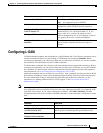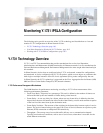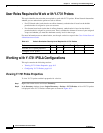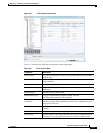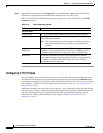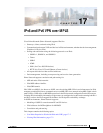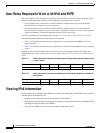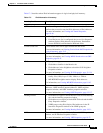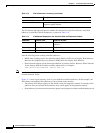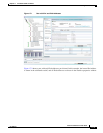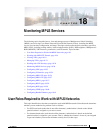
CHAPTER
17-1
Cisco Prime Network 4.0 User Guide
OL-29343-01
17
IPv6 and IPv6 VPN over MPLS
Cisco Prime Network (Prime Network) supports IPv6 for:
• Gateways, clients, and units using IPv6.
• Communications between VNEs and devices in IPv6 environments, whether the device management
IP address is IPv4 or IPv6.
• Polling and notification using the following protocols over IPv6:
–
SNMP v1, SNMPv2c, and SNMPv3
–
Telnet
–
SSHv2
–
ICMP
–
XML (for Cisco IOS XR devices)
–
HTTP (for Cisco UCS and VMware vCenter devices)
• All reports with devices that use IPv6 addresses.
• Fault management, including event processing and service alarm generation.
Prime Network supports correlation and path tracing for:
• 6PE and native IPv6 networks.
• IPv6 BGP address families.
• IPv6 GRE tunnels.
IPv6 VPN over MPLS, also known as 6VPE, uses the existing MPLS IPv4 core infrastructure for IPv6
transport to enable IPv6 sites to communicate over an MPLS IPv4 core network using MPLS label switch
paths (LSPs). 6VPE relies on MP-BGP extensions in the IPv4 network configuration on the PE router to
exchange IPv6 reachability information. Edge routers are configured to be dual-stacks running both IPv4
and IPv6, and use the IPv4-mapped IPv6 address for IPv6 prefix reachability exchange.
In 6VPE environments, Prime Network supports:
• Modeling of OSPFv3 routes between PE and CE devices.
• IPv6 addresses for BGP neighbors for MP-BGP.
• Correlation and path tracing.
This chapter contains the following topics:
• User Roles Required to Work with IPv6 and 6VPE, page 17-2
• Viewing IPv6 Information, page 17-2



